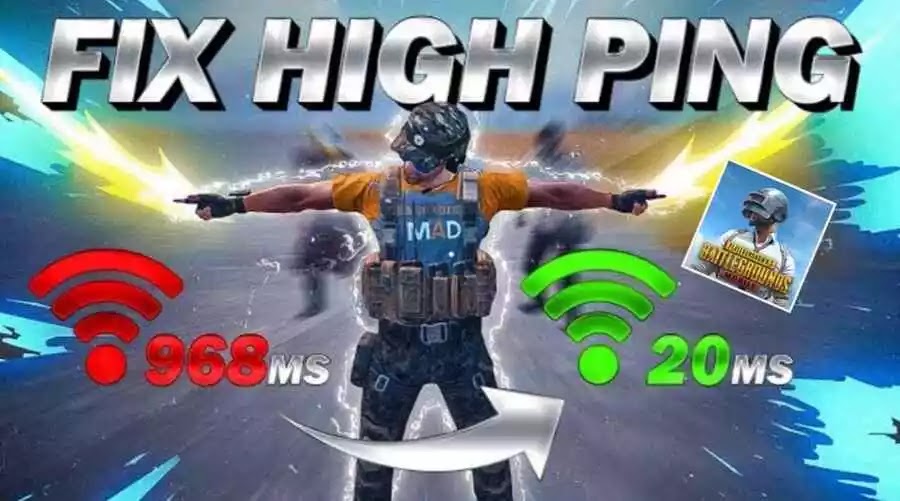Fast-paced realm of online gaming, the difference between victory and defeat often hinges on split-second reactions and seamless connectivity. However, for many gamers, the frustrating nemesis of high ping disrupts this delicate balance, leading to lag-ridden experiences and diminished enjoyment.
High ping, the measure of latency between a player’s device and the game server, can manifest in various forms, from delayed actions to sudden disconnects, significantly impairing gameplay quality.
Recognizing the critical need to address high ping issues for an optimal gaming experience, this guide delves into comprehensive solutions aimed at equipping players with the tools and knowledge necessary to overcome latency challenges. By understanding the underlying causes of high ping and implementing targeted strategies, gamers can reclaim control over their online gaming sessions and unlock the full potential of their skills.
Through a blend of technical insights, practical tips, and strategic recommendations, this guide offers a roadmap for enhancing the gameplay experience by tackling high ping head-on. Whether you’re a seasoned veteran or a newcomer to the gaming scene, the solutions outlined herein are tailored to empower players of all levels to conquer latency barriers and immerse themselves fully in the exhilarating world of online gaming.
Table of Contents
Understanding High Ping
Diagnosing High Ping Problems
Implementing Solutions
Best Practices for Enhanced Gameplay Experience
Frequently Asked Questions
Final Summary
Understanding High Ping
In the realm of online gaming, “ping” refers to the time it takes for data packets to travel between a player’s device (such as a computer or console) and the game server. It is measured in milliseconds (ms) and serves as a crucial indicator of latency—the delay between initiating an action in the game and its execution. A lower ping value signifies faster communication between the player and the server, resulting in smoother and more responsive gameplay.
Factors Contributing to High Ping
| Issue | Description |
|---|---|
| Network Congestion | Heavy traffic on the internet or within the player’s local network can cause data packets to encounter delays, resulting in higher ping. |
| Distance to Servers | The physical distance between a player’s location and the game servers can impact ping times. Players situated farther away from the servers typically experience higher latency. |
| Hardware Issues | Outdated or malfunctioning networking hardware, such as routers or network interface cards (NICs), can contribute to high ping by impeding the smooth transmission of data packets. |
Diagnosing High Ping Problems
Ping Tests: Utilize command-line tools or online services to perform ping tests, measuring the round-trip time for data packets sent to and received from a specific server.
Network Monitoring Utilities: Employ specialized software applications or built-in network monitoring features to analyze network traffic, identify latency spikes, and pinpoint potential bottlenecks.
Identifying Potential Sources of High Ping
- Internet Connection Quality: Assess the stability and speed of the player’s internet connection, considering factors such as bandwidth, packet loss, and jitter.
- Router Settings: Review router configuration settings, including Quality of Service (QoS) settings, port forwarding configurations, and firmware updates, to optimize network performance for gaming.
- Software Conflicts: Investigate potential conflicts with background processes, antivirus software, or firewall settings that may be consuming bandwidth or causing network interruptions.
Troubleshooting Steps for Pinpointing and Addressing Specific Causes of High Ping
Perform speed tests and packet loss tests to evaluate the performance of the internet connection and identify any abnormalities.
Monitor Network Activity:
Use network monitoring tools to track bandwidth usage, identify bandwidth-intensive applications or devices, and prioritize gaming traffic.
Check Hardware Components:
Inspect networking hardware, including modems, routers, Ethernet cables, and network adapters, for any signs of damage or malfunction.
Update Drivers and Firmware:
Ensure that network drivers and router firmware are up to date to take advantage of performance improvements and bug fixes.
Optimize In-Game Settings:
Adjust graphics settings, disable background processes, and close unnecessary applications to reduce system resource usage and minimize latency.
Implementing Solutions

- Consider upgrading your internet plan to one with higher bandwidth and lower latency, or switch to a more reliable Internet Service Provider (ISP) if available.
- Adjust router settings to prioritize gaming traffic, enable Quality of Service (QoS) features, and optimize network configurations for better gaming performance.
- Whenever possible, utilize wired connections instead of Wi-Fi to reduce latency and improve connection stability, especially during intense gaming sessions.
Configuring In-Game Settings
- Fine-tune graphics settings and resolution to strike a balance between visual quality and performance, reducing strain on hardware and minimizing latency-inducing graphical processing.
- Enable game-specific features such as “game mode” or “low-latency mode” to prioritize real-time gameplay data transmission, enhancing overall online gaming smoothness and responsiveness.
Choosing Optimal Servers
- Prioritize servers with lower latency and better geographical proximity to minimize ping times and reduce delays in data transmission.
- Utilize server browser tools or in-game server selection options to identify and connect to servers that offer optimal gaming conditions, such as lower player counts or dedicated gaming communities.
Employing Third-Party Software
- Install network optimization tools and Virtual Private Networks (VPNs) to improve connection stability, reduce packet loss, and mitigate latency-related issues.
- Explore ping-reducing applications and services designed to dynamically optimize network routes and prioritize gaming traffic for smoother online gameplay experiences in real time.

Best Practices for Enhanced Gameplay Experience
- Stay up-to-date with the latest drivers, firmware, and software updates for your gaming hardware and peripherals.
- Regularly check for patches, updates, and optimizations for your gaming software and operating system to ensure smooth performance and compatibility with the latest features.
Maintaining a Clean and Organized Gaming Setup to Minimize Potential Interferences
- Keep your gaming area clutter-free and well-ventilated to prevent overheating and maintain optimal performance for your gaming hardware.
- Organize cables and peripherals neatly to reduce clutter and minimize the risk of accidental damage or disconnection during gameplay.
Joining Gaming Communities and Forums for Troubleshooting Assistance and Networking Opportunities
- Engage with fellow gamers in online communities, forums, and social media groups to share experiences, seek advice, and troubleshoot technical issues.
- Participate in gaming events, tournaments, and online matches to network with like-minded individuals and foster camaraderie within the gaming community.
Practicing Good Gaming Etiquette and Communication Strategies for Better Teamwork and Cooperation During Online Matches
- Communicate effectively with teammates using in-game voice chat or text messaging to coordinate strategies, share information, and provide support during gameplay.
- Respect your fellow players by adhering to established gaming etiquette, avoiding toxic behavior, and promoting a positive and inclusive gaming environment.
- Foster teamwork and cooperation by demonstrating sportsmanship, offering constructive feedback, and celebrating both individual and team achievements.
Frequently Asked Questions
Why do I experience high ping in online gaming?
High ping can occur due to various factors, including network congestion, distance to game servers, hardware limitations, and software conflicts. These issues can lead to delays in data transmission between your device and the game server, resulting in lag and reduced gameplay performance.
How can I determine the cause of high ping in my online gaming sessions?
You can diagnose high ping issues by using tools such as ping tests, network monitoring utilities, and speed tests. These tools help identify potential sources of latency, such as internet connection quality, router settings, or software conflicts, allowing you to troubleshoot and address specific issues accordingly.
What are some effective ways to optimize my internet connection for gaming?
Optimizing your internet connection involves upgrading to a higher-tier internet plan, adjusting router settings for better gaming performance (including enabling Quality of Service features), and prioritizing wired connections over Wi-Fi whenever possible to reduce latency and improve stability.
How can I choose the best gaming servers to minimize high ping?
To minimize high ping, prioritize servers with lower latency and better geographical proximity to your location. Utilize server browser tools or in-game server selection options to identify and connect to servers optimized for low-latency gaming conditions, ensuring a smoother and more responsive gaming experience.
Are there any additional measures I can take to enhance my overall gameplay experience?
In addition to addressing high ping issues, consider configuring in-game settings to optimize graphics and performance, joining gaming communities and forums for troubleshooting assistance and networking opportunities, and practicing good gaming etiquette and communication strategies for better teamwork and cooperation during online matches. These measures can contribute to a more enjoyable and immersive gaming experience overall.
Final Summary
From optimizing internet connections and configuring in-game settings to choosing optimal servers and employing third-party software, gamers have a myriad of tools and strategies at their disposal to mitigate latency issues and elevate their gaming experience. By upgrading internet plans, adjusting router settings, and prioritizing wired connections over Wi-Fi, players can minimize latency and ensure a more stable gaming connection.
Furthermore, by fine-tuning graphics settings, activating game-specific features, and selecting servers with lower latency and better geographical proximity, gamers can further optimize their gaming experience for smoother gameplay and reduced lag. Additionally, utilizing network optimization tools, VPNs, and ping-reducing applications can provide real-time latency mitigation and enhance connection stability during online gaming sessions.
